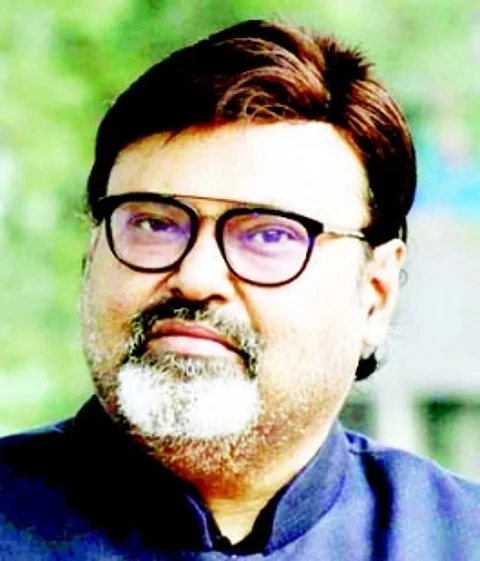

After a solid start to Narendra Modi’s tenure as the PM way back in 2014, it is now time for Modi 3.0 and “Coalition dharma,” a phrase coined by BJP stalwart Atal Bihari Vajpayee is back and is perhaps the order of the day.
After 10 years of absolute majority rule, the coalition era is back in Indian politics.
For a lion’s share of the Eighties and the Nineties, the Indian electorate had delivered a fragmented mandate and coalition politics was very much a part of the democratic system. However, with 2014, all this came to an end and the writing on the wall was clear. For the record, the government since 2014 was a part of NDA, but the BJP in actual terms did not need to appease its partners for the next 10 years!
However, on June 4, 2024 all that changed and BJP albeit being the single largest party failed to secure the magic figure and on Sunday the NDA government in real terms was formed.
Also, this will be the first time for Narendra Modi to seek the help of a coalition government ever since he was elected in his first Assembly elections about several decades ago.
MODI & GOVERNANCE
Narendra Modi became active in politics by the 1990s and had played a crucial role in the ‘Ram Rath Yatra’. His ability as a good organiser, orator within the BJP and RSS circles soon became his USPs and in 2001, when the then Prime Minister Atal Bihari Vajpayee gave Modi the chance to lead the BJP government in Gujarat, there were murmurs about his (Modi’s) ability to handle internal party conflicts and set a standard to prove his winnability in polls. Yet, Modi became the face of Gujarat BJP and ruled it for the next 14 years.
Then came 2013 when the Saffron party presented Modi as their Prime Ministerial candidate and the rest is history.
The BJP may not have achieved the magic figure this time, but under Modi’s leadership, NDA returned to power for the third term, equalling Jawaharlal Nehru’s record.
Now that PM Modi is heading a coalition government in real terms, he too realises that it won’t be easy with leaders like Naidu and Nitish in the coalition.
One thing that may work in favour of PM Modi is the upcoming state Assemblies in Maharashtra, Haryana, Jharkhand and Bihar and the BJP has to go back to the board room to plan its strategy and if the party manages to wrest power in at least two out of four states, half the lost ground would be regained.
It will also strengthen his position. With nearly four decades of political experience, Modi will have to trek cautiously and avoid making allies uncomfortable while he attempts to pursue his agendas.
Also, the government has to gain the confidence of the investors and the market scenario has to be reinforced with much activity.
A coalition government has not always been bad for the stock markets. Data from PMIndia.gov.in suggests that the Sensex returned 95.6 per cent under the coalition government headed by VP Singh as the Prime Minister between December 2, 1989 and October 10, 1990.
The best performance of the Indian stock market in a coalition government rule was under Prime Minister Manmohan Singh, who headed the United Progressive Alliance-1 (UPA-1) between May 22, 2004 and May 22, 2009. The Sensex surged a massive 179.9 per cent during this period, shows data from PMIndia.gov.in.
Under UPA-2, the Sensex logged a gain of 78 per cent, while the Nifty zoomed
73.6 per cent.
The National Democratic Alliance (NDA) with Narendra Modi as the Prime Minister saw the Sensex gain 61 per cent between 2014 till 2019, data revealed.
Challenges
Modi’s new term as prime minister may face challenges in building consensus on contentious political and policy issues, especially due to the differences in interests of regional parties and a stronger Opposition.
It is also a matter of concern if the allies put excessive pressure on the government to part with funds for their respective states. Also, the issue of wooing back voters who have drifted away from BJP will be a matter of concern for the saffron party.
Going by the track record, the BJP’s major coalition partners are politically unpredictable.
Setback with allies
The Shiromani Akali Dal (SAD) and the Shiv Sena, the two oldest allies of the BJP, had left the NDA after the 2019 general election.
The SAD drifted away amid the farmers’ agitation in September 2020 while the Uddhav Thackeray-led Shiv Sena broke away after the political turbulence over the Maharashtra Chief Minister’s post in October 2019.
Coalition governments
The Indian electorate for the first time since Independence saw parties stitch up a coalition government at the Centre in 1977, following the Emergency.
The first coalition government in India was formed way back in 1977 with Morarji Desai as the Prime Minister. The 1980s and the 1990s era saw a number of coalition governments in India with VP Singh, Chandra Shekhar, Inder Kumar Gujral and HD Deve Gowda assuming the role of India’s Prime Minister at various points in time.
Indira Gandhi returned to power in 1980, and remained India’s Prime Minister till her assassination in 1983.
The Congress returned to power in 1984 with a never-before-seen majority, riding on sympathy vote after Indira’s killing. The party won 414 seats of the 541 Lok Sabha seats.
The historic mandate under Rajiv Gandhi that the Congress received would be the pinnacle for the Congress. The party’s seats just went downhill from there.
In both the UPA I and UPA II -- from 2004 to 2014 -- the Congress ran coalition governments.
A single party to receive a majority in the Lok Sabha came only in 2014, after a long gap of 25 years.
(Writer is a senior journalist and former Senior Associate Editor, OHeraldo)